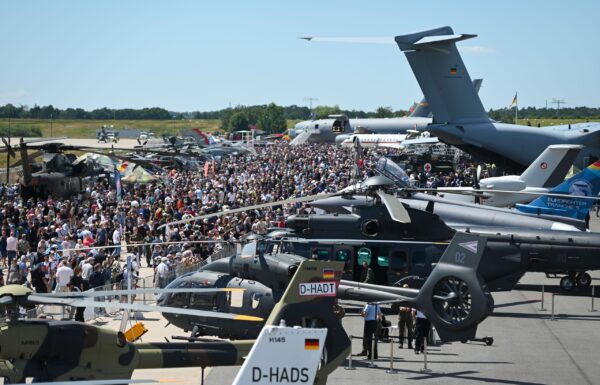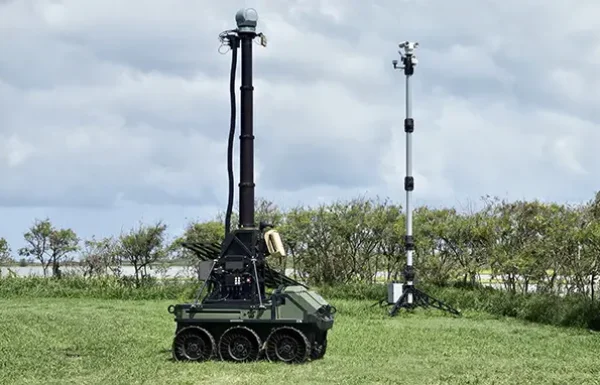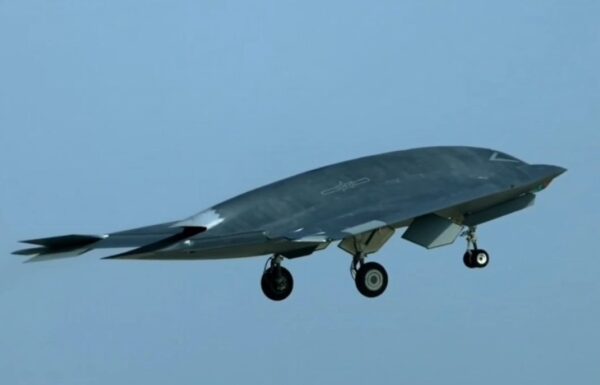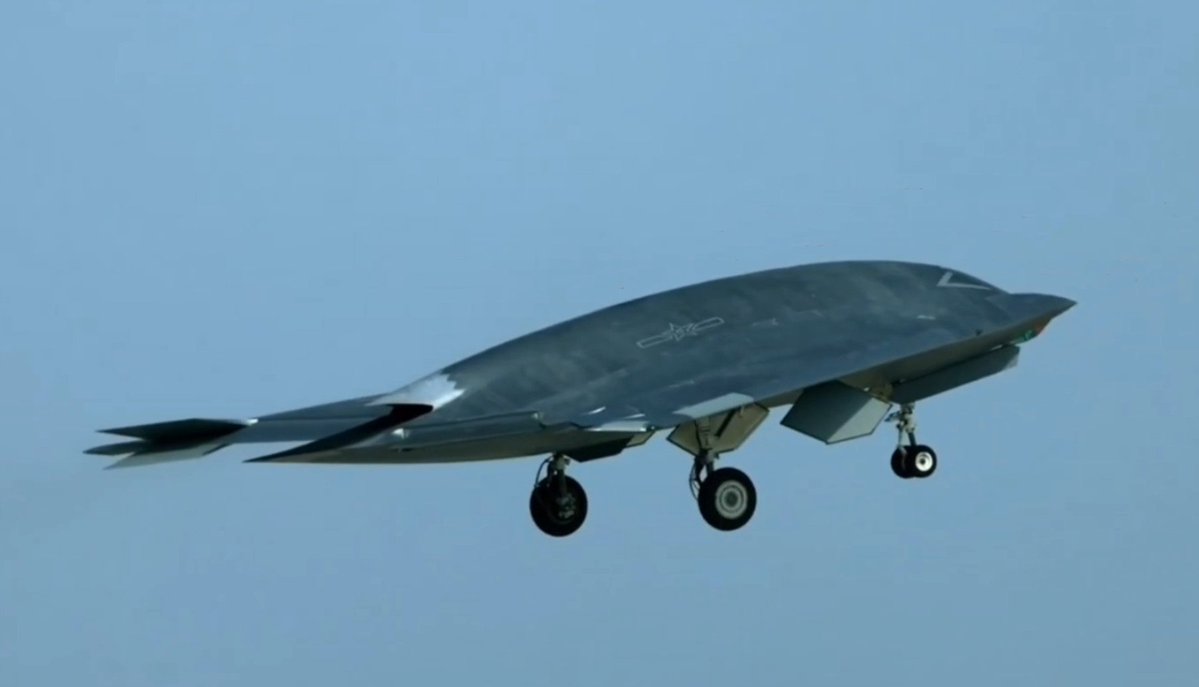On Tuesday, November 11, 2025, to mark the 76th anniversary of the founding of the Chinese People’s Liberation Army (PLA), a video was released in which, among other things, the prototype of the low-observable Hongdu Gongji-11 (GJ-11) combat unmanned aerial vehicle can be seen up close and in flight for the first time, accompanied by the crewed Shenyang J-16D electronic warfare aircraft and the Chengdu J-20A fifth-generation multirole fighter.
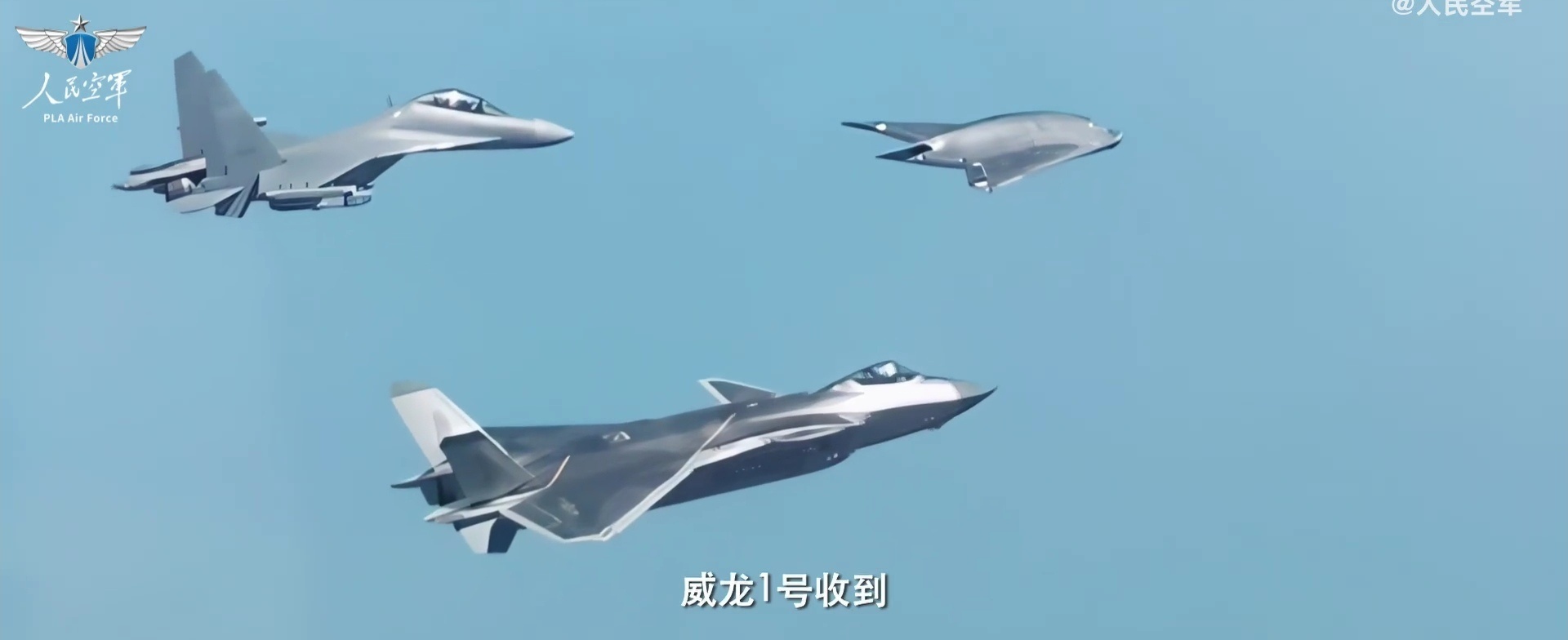 Photos: Press Service of the Chinese People’s Liberation Army
Photos: Press Service of the Chinese People’s Liberation Army
The nearly 30-minute video released on Tuesday by the Press Service of the Chinese People’s Liberation Army, titled Lofty Dreams in local media and partially circulated on social media, showcases a range of modern aircraft, including the aforementioned J-16D and J-20A, the heavy Xi’an Y-20A Kunpeng transport aircraft, Changhe WZ-10 attack helicopters, the Changhe Z-18 transport helicopter, the multirole Harbin Z-20, and one of the newest multirole fighters, the Shenyang J-35A.
New video out from the People's Liberation Army Air Force (PLAAF) of China shows the new GJ-11 stealth drone (UCAV), and also the J-20 stealth fighter firing a live PL-15 air-to-air missile: pic.twitter.com/wraDqyMOht
— The STRATCOM Bureau (@OSPSF) November 11, 2025
The most interesting element, of course, is the participation of the low-observable GJ-11 drone, which is an evolution of the prototype Lijian (Sharp Sword), first flown on November 21, 2013, during a 20-minute test flight. The Chinese refer to their aircraft as the Mysterious Dragon. It was built in a flying-wing configuration, just like the latest CH-7 from the Cai Hong family.
It was designed by institutions belonging to the state-owned AVIC (Aviation Industry Corporation of China): Aircraft Institute No. 601 in Shenyang (the Shenyang Aircraft Design Institute), which had previously developed, among other systems, the Anjian combat UAV, and the Harbin Aircraft Industry Group (HAIG) in Nanchang, from which the aircraft ultimately received its designation. It was one of seven proposals in the AVIC 601-S program that proceeded to implementation. The GJ-11 is intended to be capable of conducting combat missions as well as intelligence, surveillance, and reconnaissance (ISR), and likely electronic warfare operations.
The final version of the GJ-11, featuring improved stealth characteristics (reduced radar cross-section) including a new exhaust nozzle for its turbofan engine, was unveiled on October 1, 2019, during the military parade in Beijing marking the 70th anniversary of the founding of the PRC, when it was transported on a vehicle platform:
 Photo: Ministry of Defense of the People’s Republic of China
Photo: Ministry of Defense of the People’s Republic of China
It was later showcased during the 13th China International Aviation & Aerospace Exhibition (Airshow China) in Zhuhai near Hong Kong, held from September 28 to 30, 2021. According to reports, the naval variant, the GJ-11H, is expected to be capable of taking off from and landing on the Type 076 universal amphibious assault ship (NATO reporting name: Yulan), whose prototype, the future CNS Sichuan (51), was christened on December 27, 2024.
Via ACuriousPLAFan/SDF: 😮
Supposedly not a recent image, but still the carrier mock-up and test facility at Wuhan has gained some new aircraft: Visible now are clearly mock-ups of J-15, J-35, KJ-600 and a GJ-11H on the flight deck.
(Image via @伏尔戈星图 from Weibo) pic.twitter.com/UL6uk81zh4
— @Rupprecht_A (@RupprechtDeino) December 19, 2023
In October 2022, Chinese media presented computer-generated concepts of three GJ-11 aircraft controlled by a two-seat version of the J-20S/AS, modeled after the U.S. Loyal Wingman program (Collaborative Combat Aircraft, CCA).
Un passage dans un reportage de CCTV-7 montre la possible collaboration entre un J-20 biplace et des #drones GJ-11 à faible observabilité.
La représentativité est à confirmer. pic.twitter.com/9Xy8Q8KQOO
— East Pendulum (@HenriKenhmann) October 12, 2022
Promotional video for the shipborne version of the GJ-11 drone shown by the AVIC at the China Air Show. pic.twitter.com/RDw8COgPAA
— 彩云香江 (@louischeung_hk) October 7, 2021
Since then, photographs from subsequent tests have begun to appear (including ones showing an arresting hook for landing on a flat aircraft carrier deck), and in 2024 a large number of units were observed at Malan Air Base in the Xinjiang Uyghur Autonomous Region, which has been used for testing new aircraft since 1959. More recently, they were spotted at Rikaze Peace Air Base in Tibet (according to satellite images taken between August 6 and September 5), and a mock-up of the aircraft was presented on September 3 of this year during a military parade in Beijing as part of the central celebrations of the 80th anniversary of Japan’s surrender and the end of World War II in the Far East.
As it seems, for the first time clear images of a GJ-21 in flight are posted and this one – based on the still installed pitots – has its tail hook down. pic.twitter.com/5h1nVZHzIe
— @Rupprecht_A (@RupprechtDeino) November 1, 2025
According to some commentators, the prominent appearance of the GJ-11 in the video released by the Chinese military suggests that it has finally entered operational service. There is, however, no definitive evidence of this yet.
See also:



